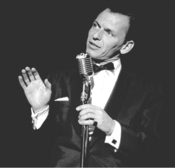Stronger Muscles Equal A Stronger Voice
 Gary Catona Posted on
Gary Catona Posted on  Wednesday, October 16, 2013 at 05:02PM
Wednesday, October 16, 2013 at 05:02PM  Why is my system the first legitimate voice building system? Because it's the first comprehensive, methodical, vocal exercise regimen that is thoroughly grounded in, and guided by, tested scientific principles of muscular development.
Why is my system the first legitimate voice building system? Because it's the first comprehensive, methodical, vocal exercise regimen that is thoroughly grounded in, and guided by, tested scientific principles of muscular development.
Any improvement in vocal quality and performance ALWAYS results from increased strength and coordination of the vocal muscles (i.e. the muscles of the larynx, pharynx, oral cavity, and soft palate).




